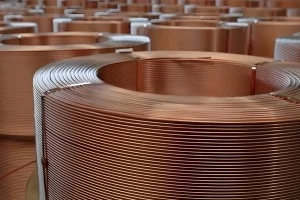
Introduction
Brief Overview of Transformer Wire Materials: Copper and Aluminum
Transformers are integral components in electrical systems, facilitating the efficient transfer of electrical energy between different voltage levels. One critical aspect of transformer design is the selection of wire materials, with copper and aluminum wires being the most commonly used options. The choice between copper and aluminum wires can significantly impact the transformer’s performance, efficiency, and cost.
Importance of Choosing the Right Wire Material for Transformers
Copper wire is renowned for its superior conductivity and thermal stability, making it ideal for applications where efficiency and reliability are paramount. On the other hand, aluminum wire offers cost-effectiveness and lighter weight, making it suitable for installations where weight and cost are primary considerations. The choice between copper and aluminum wire materials significantly impacts transformer performance, efficiency, and overall cost. Therefore, understanding the importance of selecting the right wire material is crucial for optimizing transformer design and functionality.
Conductivity Comparison
Explanation of Conductivity in Copper and Aluminum Wires
Conductivity refers to the ability of a material to conduct electrical current. In copper wires, conductivity is exceptionally high due to the free movement of electrons within the metal lattice structure. Aluminum wires also exhibit good conductivity, although slightly lower than copper, owing to their atomic structure.
Advantages of Copper Wire in Terms of Conductivity
Copper wire stands out for its superior conductivity compared to aluminum. This high conductivity ensures minimal energy loss during transmission, making copper an excellent choice for applications where efficiency is paramount. The low resistance of copper wires results in reduced heat generation and improved overall performance.
Comparing Aluminum Wire Conductivity with Copper
While aluminum wire conductivity is lower than copper, it remains a viable option for certain applications. Despite its slightly higher resistance, aluminum’s lightweight nature and lower cost make it an attractive alternative, especially in situations where weight and budget constraints are significant factors. However, it’s essential to consider the specific requirements of the application to determine the most suitable wire material.
Durability and Reliability
Overview of the Durability Characteristics of Copper and Aluminum Wires
Both copper and aluminum wires exhibit commendable durability attributes, albeit with some differences. Copper is known for its excellent resistance to corrosion and oxidation, ensuring longevity even in harsh environments. Aluminum, while also corrosion-resistant, may require additional protective coatings in certain conditions to mitigate corrosion risks.
Comparison of the Mechanical Properties of Both Wire Materials
In terms of mechanical properties, copper wires boast superior strength and flexibility compared to aluminum. Copper’s malleability allows it to withstand bending and shaping without compromising its structural integrity. Aluminum wires, although less ductile, offer adequate flexibility for many applications but may be more susceptible to breakage under excessive stress.
Effects of Environmental Factors on Wire Durability
Environmental factors such as moisture, temperature fluctuations, and exposure to chemicals can impact the durability of both copper and aluminum wires. While copper demonstrates excellent resilience in various conditions, aluminum may require additional protection to maintain its integrity over time. Proper insulation and protective coatings can mitigate environmental effects and enhance the long-term reliability of both wire materials.
Applications and Suitability
Applications Where Copper Wire is Preferred
Copper wire finds preference in applications where high conductivity and superior mechanical properties are paramount. These include high-performance transformers for industrial and commercial settings, where efficiency and reliability are critical. Additionally, copper’s compatibility with high temperatures makes it ideal for applications where thermal stability is essential, such as in heavy-duty electrical systems.
Situations Where Aluminum Wire is More Suitable
Aluminum wire is often preferred in situations where weight and cost considerations are significant factors. Its lighter weight compared to copper makes it advantageous in applications where weight reduction is desirable, such as in large power distribution systems or overhead power lines. Additionally, aluminum’s lower cost relative to copper makes it an attractive option for projects with budget constraints, without sacrificing electrical performance.
Considerations for Specific Transformer Applications
When selecting between copper and aluminum wire for transformer applications, factors such as voltage requirements, current carrying capacity, and environmental conditions must be carefully considered. Copper wire may be preferred for high-power transformers requiring excellent conductivity and durability, while aluminum wire may be suitable for lower voltage applications or where weight reduction is prioritized. It’s essential to assess the specific requirements of each transformer application to determine the most suitable wire material for optimal performance and reliability.